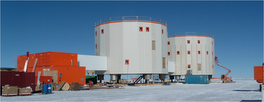Sunday Seismometer #10
Press-Ewing (1953)
Some 40 years after the Galitzine electromagnetic innovation, the same principles of operation are put to work in the Ewing-Press seismograph, built at the Lamont Geological Observatory of Columbia (now the Lamont-Doherty Earth Observatory) by Maurice Ewing and Frank Press.
In the photo below you can see the vertical Press-Ewing instrument on display at the Strasbourg Seismological Museum. It was in use in Strasbourg from 1963 to 1975.
It is an electromagnetic seismograph, coupled with a galvanometer, and has a natural period that can be selected and fixed up to 30s. Recording was optical, on photographic paper. The glass ball you can see on the near side of the instrument reduces the effect of variations in atmospheric pressure on the seismograph recordings, using the Archimedes principle.
This seismograph and its horizontal counterparts are very well adapted for the recording of surface waves. In 1957-58, Press-Ewing instruments were deployed in 125 locations around the globe to establish the World-Wide Standardized Seismograph Network, the first global earthquake monitoring system.

5 comments:
Sorry, my comment was more related to the M5+ earthquake at lake baikal than to this.
Interesting siesmometer though.
Oh I see.
Yes, the M6.2 Baikal earthquake is indeed very interesting.
Only the second M6+ event to occur in the region, right in a cluster of events on the southeastern end of the lake.
I am afraid I do not know that much about the tectonics of the region, but will look into it when I have a moment.
Ups!!!
I am afraid. I do not know that much about the tectonics of the region, but will look into it when I have a moment.We are also go for this site:-
India Tour Packages
In principle, a good happen, support the views of the author
Post a Comment